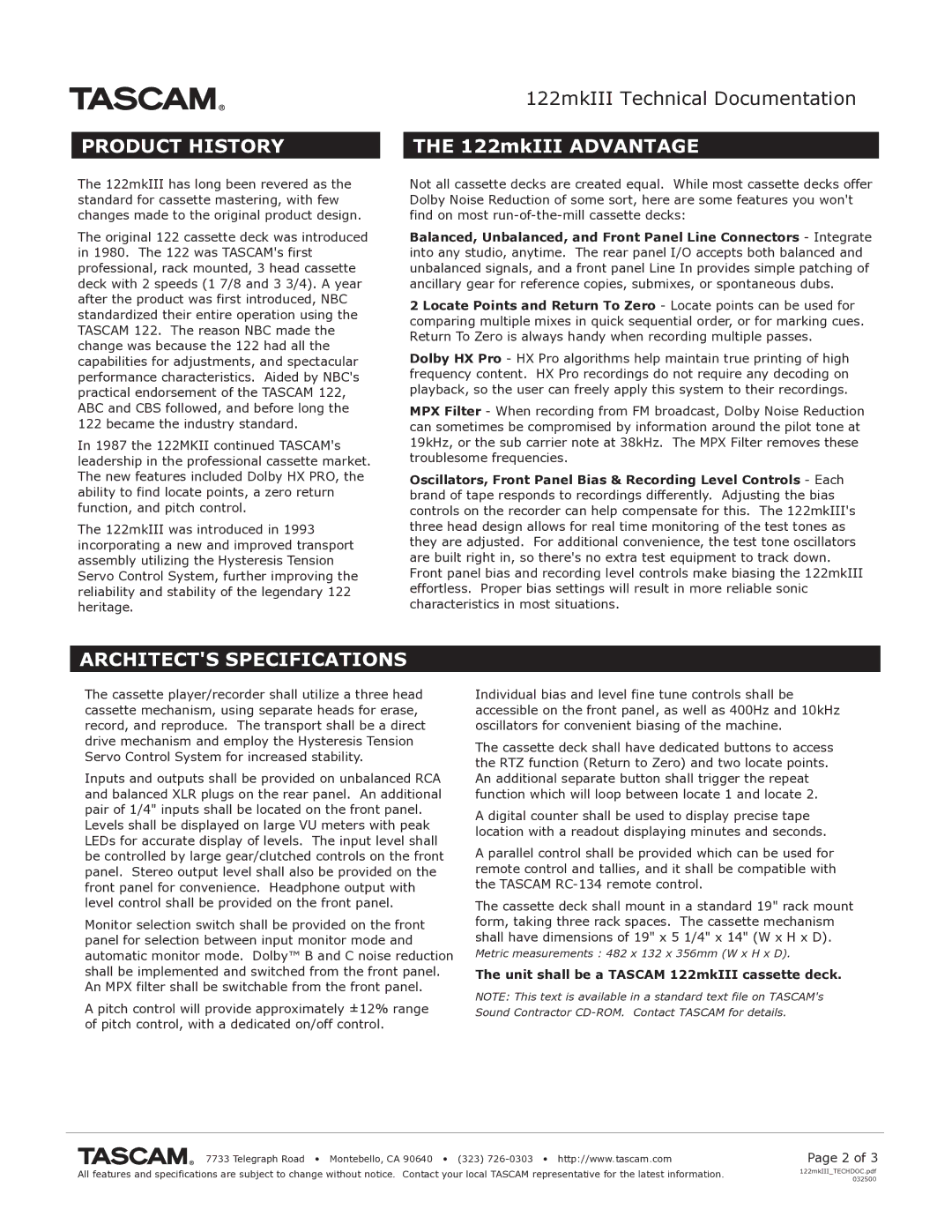122MKIII specifications
Tascam, a renowned name in professional audio, has developed a series of high-quality cassette decks that have become staples in recording studios and among audio enthusiasts. The Tascam 112MKII, 122MKII, 122MKIII, and 122RMKII are notable models, each bringing distinct features and innovations tailored for various recording needs.The Tascam 112MKII is celebrated for its user-friendly design and solid performance. Equipped with dual Dolby B/C noise reduction, it significantly enhances audio fidelity by reducing tape hiss, ensuring clean playback. Its rack-mountable form factor suits professional environments, while features like the large-capacity tape transport mechanism provide durability. The 112MKII also supports auto-reverse playback, allowing for seamless listening without manual intervention, making it a favorite for both casual users and serious recordists.
Next in the lineup is the Tascam 122MKII, which enhances the features of its predecessor while introducing versatile capabilities. This model is fitted with a more advanced transport system along with a built-in microphone preamp, making it easier to capture audio directly onto cassette. The inclusion of a three-head design allows for simultaneous recording and monitoring, providing a better playback experience. With improved controls, users can finely adjust levels, making the 122MKII a reliable choice for musicians and sound engineers.
The Tascam 122MKIII builds upon the strengths of the MKII model, providing higher-quality components and enhanced audio performance. This model boasts an upgraded, more sensitive tape transport system that allows for greater precision during recording. The addition of digital outputs adds versatility, allowing users to connect directly to digital audio systems without losing sonic quality. The 122MKIII also features a backlit display and improved button layout, offering a more intuitive user experience.
Lastly, the Tascam 122RMKII is designed for professional applications, featuring enhanced functionalities for studio environments. This model stands out for its ability to handle various tape formats and its extensive connectivity options. The inclusion of advanced noise reduction technologies ensures that recordings maintain clarity and depth. With a robust build quality, the 122RMKII can withstand the rigors of daily use in a professional setting.
In summary, Tascam's 112MKII, 122MKII, 122MKIII, and 122RMKII reflect the brand’s commitment to delivering quality audio solutions. Each model features innovative technologies, robust designs, and user-friendly interfaces, catering to a wide range of audio recording needs. Whether for casual listening or professional applications, these cassette decks remain indispensable tools for achieving high-fidelity sound.

